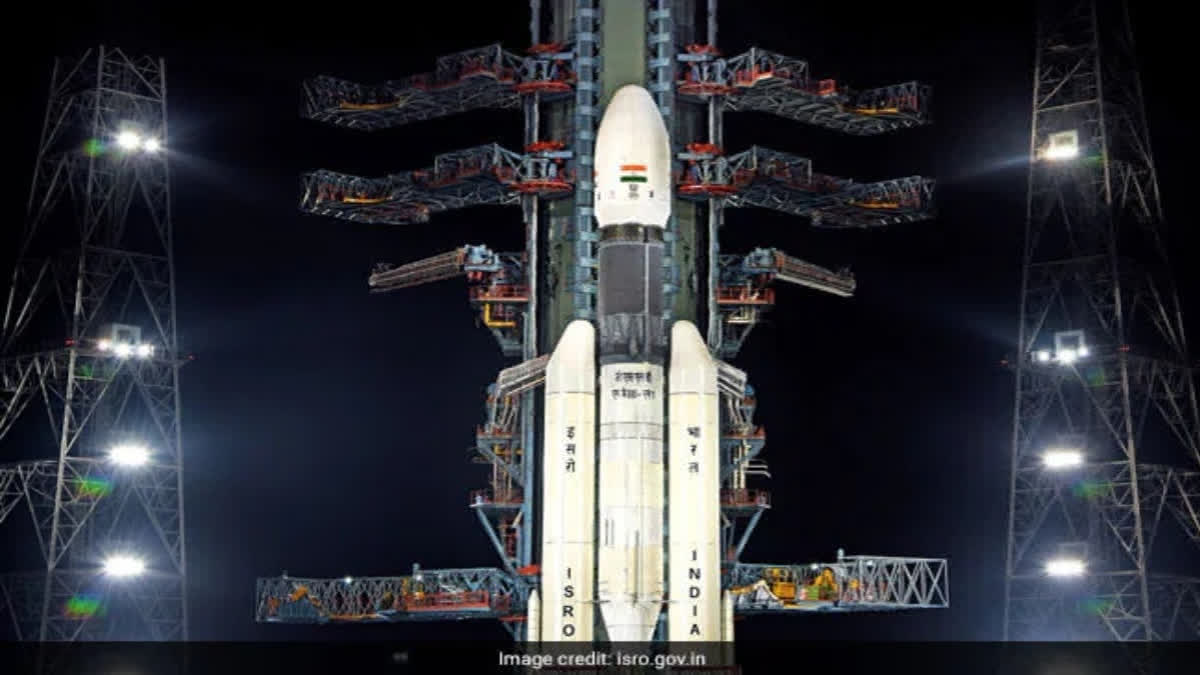Bengaluru: Building upon the achievements and lessons learnt from Chandrayaan-2, Indian Space Research Organisation (ISRO) aims to further solidify India's position in the global space exploration arena. ISRO's engineers have implemented crucial design modifications and advancements to enhance the performance and reliability of the Vikram Lander in Chandrayaan-3.
India's third planned lunar exploration mission, set to be launched on July 14, and a 26-hour countdown has begun at 1:05 pm on Thursday, will consist of a lander and a rover similar to Chandrayaan-2, but would not have an orbiter. Instead, it has been replaced by a propulsion module, which will behave as a communication relay satellite. The propulsion module will carry the lander and rover configuration until the spacecraft is in a 100 km lunar orbit. The propulsion module has a Spectro-polarimetry of Habitable Planet Earth (SHAPE) payload to study the spectral and Polari metric measurements of earth from the lunar orbit.
The Chandrayaan-3 spacecraft will be carried by India's heavy-lift rocket the 642-ton LVM3. At 2:35 pm, the three-stage LVM3 rocket will blast off from the second launch pad at Sriharikota rocket centre in Andhra Pradesh.
One of the primary objectives of Chandrayaan-3 is to conduct a soft landing on the lunar surface and deploy a rover to explore the landing site. The lander carried by spacecraft is expected to make a soft landing on the moon on August 23 or 24. The lander of Chandrayaan-3 weighs 1,723.89 kg unlike that of Chandrayaan-2 weighing 1,471 kg (including the 27 kg Pragyan rover). The Lander Payloads consist of:
- Radio Anatomy of Moon Bound Hypersensitive Ionosphere and Atmosphere (RAMBHA): To measure the near-surface plasma (ions and electrons) density and how it is changing with time.
- Chandra’s Surface Thermophysical Experiment (ChaSTE): To carry out the measurements of thermal properties of the lunar surface near the polar region.
- Instrument for Lunar Seismic Activity (ILSA): To measure the frequency of the earthquake around the landing site and delineate the structure of the lunar crust and mantle.
- LASER Retroreflector Array (LRA): To understand the dynamics of the Moon system.
In September 2019, when everyone had their eyes following Chandrayaan-2 were left disappointed after ISRO could not complete the landing mission successfully, even though its orbiter is still very much alive and sending data.
What went wrong with Chandrayaan-2's Lander?
- Velocity and altitude descent: The Vikram Lander of Chandrayaan-2 failed due to a tilt of 410 degrees instead of the planned 55 degrees and eventually was set to land in an autonomous mode on the moon. The velocity of the Vikram lander was expected to slow down from 6000 kmph to 0 kmph in four phases, but ISRO lost contact with the lander ahead of its touchdown on the lunar surface.
- Communication breakdown: ISRO lost contact with Vikram when it was just 400 metres away from the landing surface, if had been successful, India would have been the fourth country in the world to land softly on the moon.
- Software or navigation errors: The system used to guide the lander during descent any minute error such as incorrect sensor reading or navigation calculations, resulted in descent trajectory leading to its failure.
The reason behind losing contact with the lander has been attributed to a software glitch. Due to the change in trajectory and the lack of speed reduction, the Vikram lander, along with the moon rover Pragyan, were destroyed when they crash-landed on the moon. In short, the ability to handle the parameter dispersion of the lander was very limited.
How is Chandrayaan-2's Lander different from Chandrayaan-3's Lander?
- Strong legs of the lander: Vikram is equipped with stronger legs to enable withstanding landing at greater velocities than that of the previous model. It is enhanced the landing velocity to 3m/second from 2m/second. That means even at 3m/sec, the lander will not crash or break according to Somnath.
- New sensor and more fuel: New sensor called the laser Doppler velocity metre, which will look at the lunar terrain is added.
- Central engine and software: Unlike, the Chandrayaan-2 lander with five engines this lander have two engines to do the landing and the central engine has been removed.
- Solar panel and antennas: With extended solar panels and more panel area to generate power, Vikram will be able to generate power even if it lands in a different orientation and not facing the Sun. It also has additional TTC (tracking, telemetry and command) antennas for redundancy.
Earth is the only world in the universe that we know hosts life, and (Spectro-polarimetry of HAbitable Planet Earth) SHAPE observations will allow scientists to find out the signatures of habitable planets when observed in infrared wavelengths. The signatures in turn will help scientists better understand distant exoplanets which would qualify for habitability (or for the presence of life).
Also read: With Chandrayaan-3 launch this week, India to become 4th country to land spacecraft on moon



